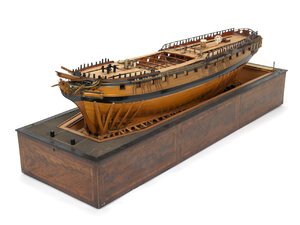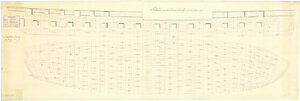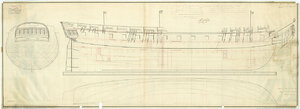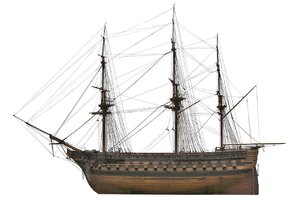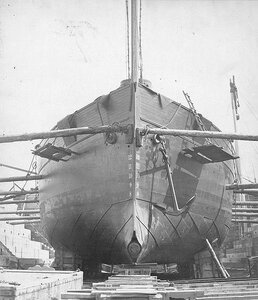Today in Naval History - Naval / Maritime Events in History
16th of July
please use the following link and you will find the details and all events of this day ..... in the following you will find some of the events
1797 Action of 16 July 1797 when HMS Anson (44), Cptn. Philip Charles Durham, and HMS Sylph (18), Cptn. John Chambers White, destroyed Calliope (32) off Ushant
At the Action of 16 July 1797, Anson and Sylph drove the French corvette Calliope on shore, where Sylph proceeded to fire on her. When Pomone checked a week later, Calliope was wrecked; her crew were camped on shore trying to salvage what stores they could. Pomone confirmed that the flute Freedom and a brig that had also been driven ashore too were wrecked.

Capture of the Pomona by Anson & Arethusa off Havannah, 23 Aug 1806

Scale: 1:48. Plan showing the body plan, sheer lines with stern quarter decorations, and longitudinal half-breadth proposed (and approved) for 'Anson' (1781), a 64-gun Third Rate, two-decker. Signed by John Williams [Surveyor of the Navy, 1765-1784].
1863 - The Battle of Shimonoseki Straits (Japanese:下関海戦, Shimonoseki Kaisen)
was a naval engagement fought on July 16, 1863, by the United States Navy warship USS Wyoming against the powerful daimyō (feudal lord) Mōri Takachika of the Chōshū clan based in Shimonoseki.
The USS Wyoming under Captain David McDougal, sailed into the strait and single-handedly engaged the US-built but poorly manned Japanese fleet. Engaged for almost two hours before withdrawing, McDougal sank two enemy vessels and severely damaged the other one, and inflicted some forty Japanese casualties. The Wyoming suffered considerable damage with four crew dead and seven wounded.
The battle was a prelude to the larger-scale 1863 and 1864 Shimonoseki Campaign by allied foreign powers. It took place among the troubled events of the Late Tokugawa shogunate from 1854 to 1868, associated with the opening of Japan to the European and American powers.

16th of July
please use the following link and you will find the details and all events of this day ..... in the following you will find some of the events
Naval/Maritime History - 27th of August - Today in Naval History - Naval / Maritime Events in History
11 July 1882 - The Bombardment of Alexandria in Egypt by the British Mediterranean Fleet took place on 11–13 July 1882. Admiral Beauchamp Seymour was in command of a fleet of fifteen Royal Navy ironclad ships which had previously sailed to the harbor of Alexandria to support the khedive Tewfik...
shipsofscale.com
1797 Action of 16 July 1797 when HMS Anson (44), Cptn. Philip Charles Durham, and HMS Sylph (18), Cptn. John Chambers White, destroyed Calliope (32) off Ushant
At the Action of 16 July 1797, Anson and Sylph drove the French corvette Calliope on shore, where Sylph proceeded to fire on her. When Pomone checked a week later, Calliope was wrecked; her crew were camped on shore trying to salvage what stores they could. Pomone confirmed that the flute Freedom and a brig that had also been driven ashore too were wrecked.
Capture of the Pomona by Anson & Arethusa off Havannah, 23 Aug 1806
Scale: 1:48. Plan showing the body plan, sheer lines with stern quarter decorations, and longitudinal half-breadth proposed (and approved) for 'Anson' (1781), a 64-gun Third Rate, two-decker. Signed by John Williams [Surveyor of the Navy, 1765-1784].
1863 - The Battle of Shimonoseki Straits (Japanese:下関海戦, Shimonoseki Kaisen)
was a naval engagement fought on July 16, 1863, by the United States Navy warship USS Wyoming against the powerful daimyō (feudal lord) Mōri Takachika of the Chōshū clan based in Shimonoseki.
The USS Wyoming under Captain David McDougal, sailed into the strait and single-handedly engaged the US-built but poorly manned Japanese fleet. Engaged for almost two hours before withdrawing, McDougal sank two enemy vessels and severely damaged the other one, and inflicted some forty Japanese casualties. The Wyoming suffered considerable damage with four crew dead and seven wounded.
The battle was a prelude to the larger-scale 1863 and 1864 Shimonoseki Campaign by allied foreign powers. It took place among the troubled events of the Late Tokugawa shogunate from 1854 to 1868, associated with the opening of Japan to the European and American powers.



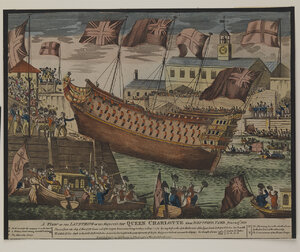
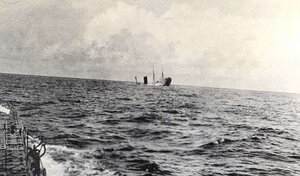
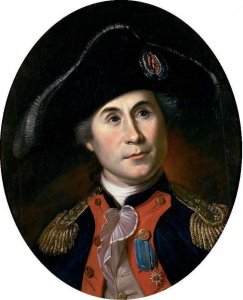


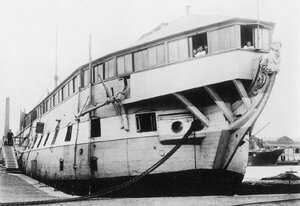

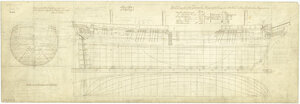
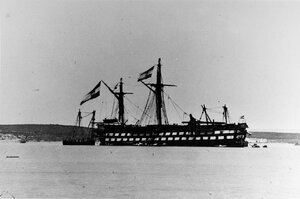
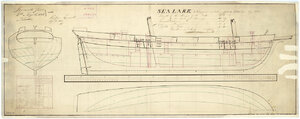


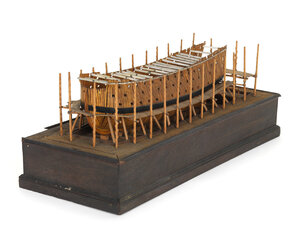
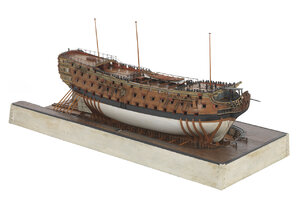
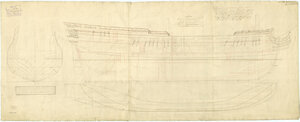



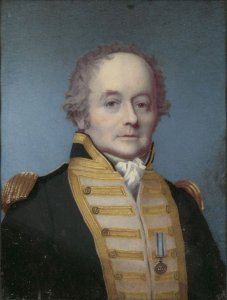

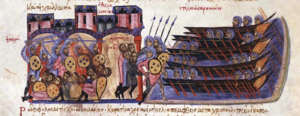

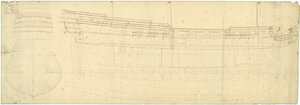
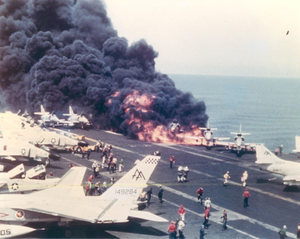
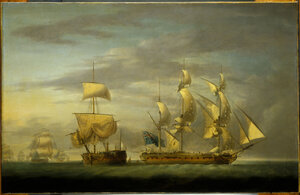
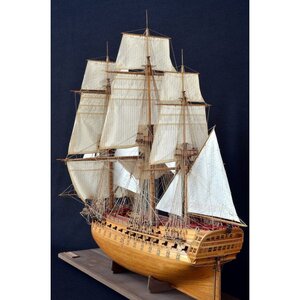
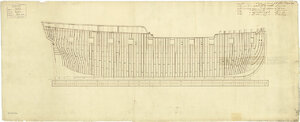
 straaten, painted c. 1654, depicts the final battle of the
straaten, painted c. 1654, depicts the final battle of the 

